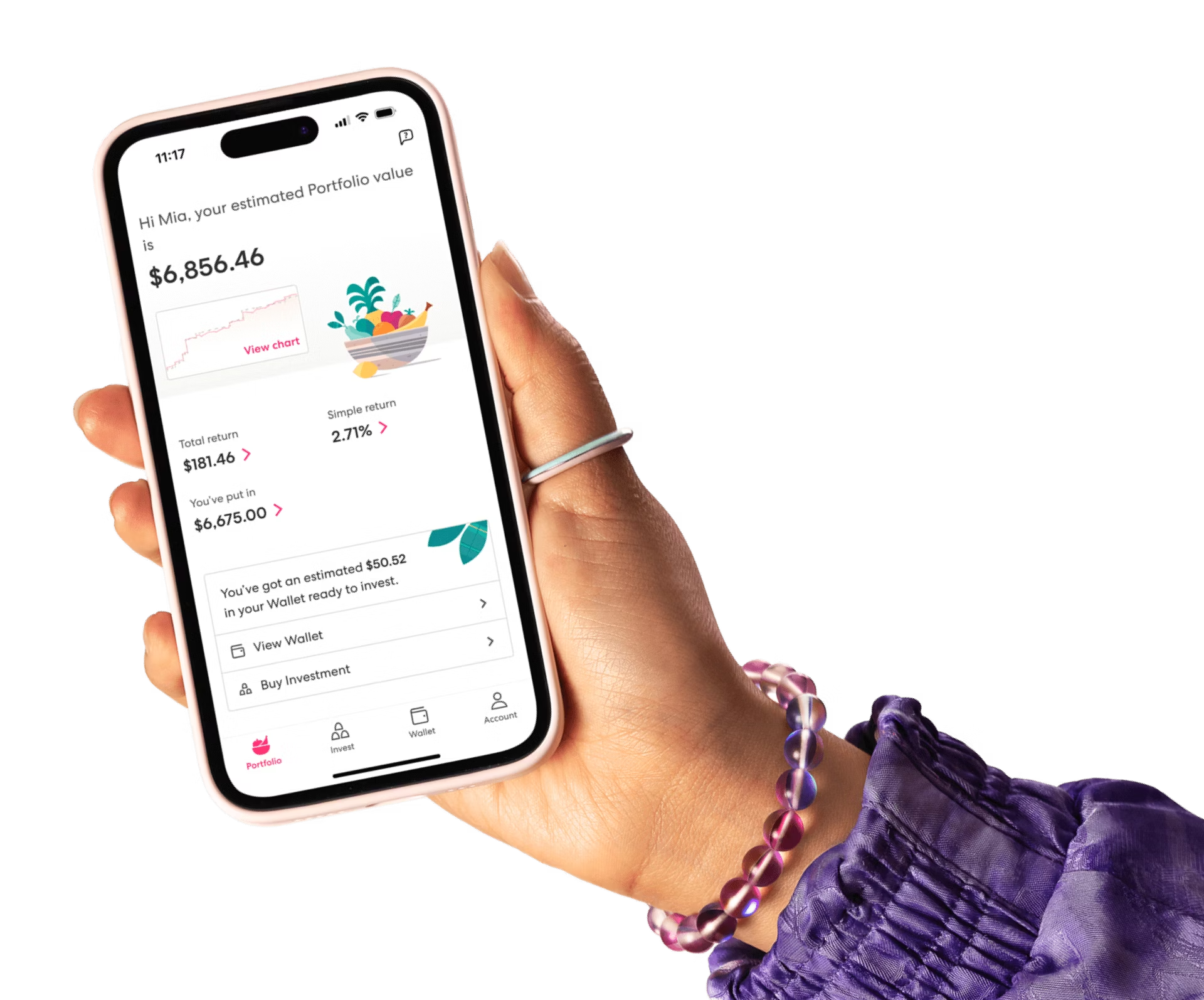Before you start investing
Making a plan before you start investing can help you stick with it—even when lifeʻs ups and downs rear their head! We look at working out an affordable amount to invest, and making a plan to tackle debt.

No matter who you are, things are going to come up that get in the way of investing, like:
thinking you don’t have enough to invest
unexpected large expenses
credit card debt.
These things can tempt you into putting off your investing or even sell some investments, ‘just this once’. When this happens, you might miss out on future returns—or even lock in a loss!
A great way to avoid this is to make a plan before you start. This gives you something to fall back on when your life runs into those inevitable road bumps. And for some, getting started in spite of everything else might just be the thing that gets you on the right track. Here’s how:
Use a budget to choose an affordable amount
Choosing how much you invest can be kind of tricky. You want to invest enough to make a difference, but not so much that you struggle to enjoy your day-to-day life. A budget is a great way to find the right amount to invest on a regular basis.
It doesn’t have to be anything super complicated. Rather, it’s just a look at where your money generally goes. What are your big-ticket spending habits? Do you spend most of your money going out with friends? Or on your hobby? Or on something more mundane, like rent?
By making a budget, you get a lot more visibility over what’s happening with your finances. This helps you choose an affordable amount to invest, so you know you can keep at it without impacting your day-to-day spending too much.
The ‘what-ifs’
Run through some scenarios in your brain before you invest. If you have a car, what will you do if it breaks down, and costs a few hundred bucks to fix? Do you have a few hundred bucks, or would you have to crack into your investment?
If the answer is no, you should put aside an emergency fund—either in a bank account, or a low-risk investment. Eventually, you should have enough aside to cover three months’ salary, but to start, you only need enough to cover unexpected expenses.
This doesn’t mean you should put off investing until you have an emergency fund. Rather, you can have it both ways. Just invest a little bit, while also putting money aside. For example, if you have $100 a week left over after your expenses, you could invest $10, and put $90 towards an emergency fund. Once you have a good buffer set up, you could increase the amount you invest each week.
This lets you start investing today, without leaving your investment exposed to unexpected expenses.
Make a debt plan
If you have lots of high-interest debt, like credit card debt or hire purchases, that debt may be a roadblock in front of investing. After all, credit cards often have interest rates of 20% a year! This means that every dollar you’re investing instead of paying off the card is accruing interest instead of working for you.
But you also want to bed in an investing habit. So figure out how much debt you have, and how much money you can put towards paying it off. This might be $100 per week. Then, start investing a very small proportion of that. If you’re paying $100 a week towards your credit card, you could invest $10 a week. This lets you prioritise paying off your debt while also building an investment habit. Then, when your debt is paid off, you can move the $100 per week towards investing—it’s much easier to add to a habit than it is to start a new one, after all.
Once you have your debt paid off, you can follow some simple rules to stop it from getting out of control:
pay off your credit card before the end of each month
always make higher payments than the minimum repayment
consider getting rid of your credit card entirely if you find things are getting out of control.
Start now!
Here’s the really cool thing: investing isn’t an “all or nothing” proposition. You can invest as much or as little as you want. This is important, because even a little bit is better than nothing.
So even if you have debts to pay off, or an emergency fund to save up for, you can still invest a little bit right away, no matter what your situation is. Then, over time, you can slowly increase the amount of money you invest regularly.
This is important, because the sooner you start investing, the better. Every day that goes by without you investing is a day that you’re missing out on potential returns—and more importantly, in those early days, some education! Even if you can only invest a little bit to start, it’s better than nothing … and a little bit of money invested each week forms a solid foundation for growing your investments, further down the track.
Ok, now for the legal bit
Investing involves risk. You aren’t guaranteed to make money, and you might lose the money you start with. We don’t provide personalised advice or recommendations. Any information we provide is general only and current at the time written. You should consider seeking independent legal, financial, taxation or other advice when considering whether an investment is appropriate for your objectives, financial situation or needs.
Join over 800,000 investors



